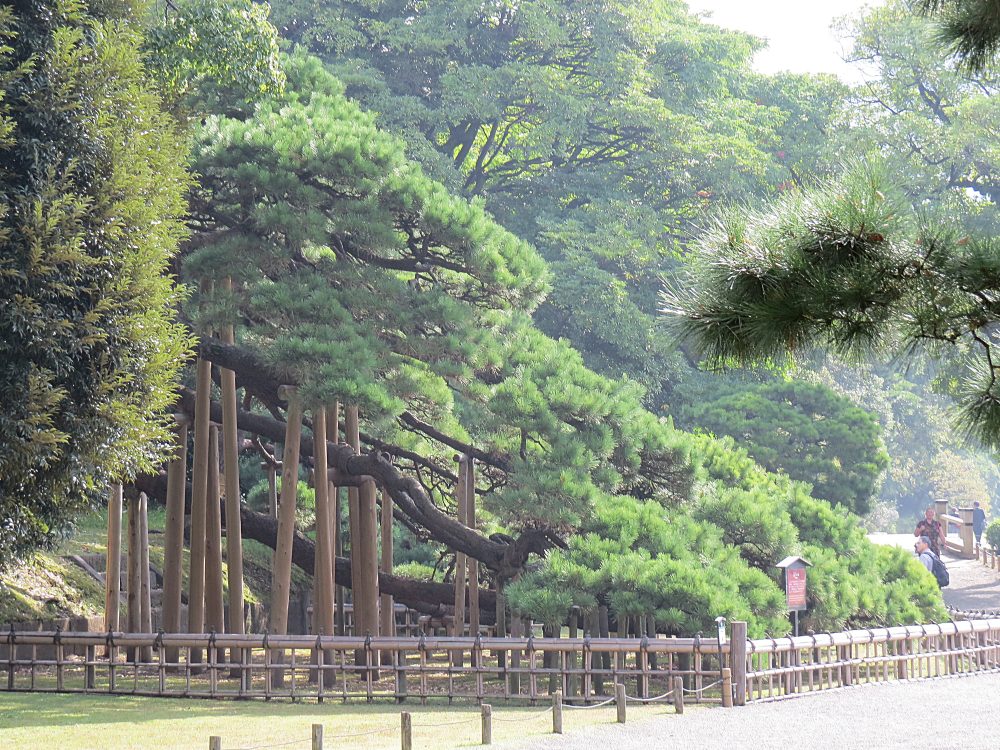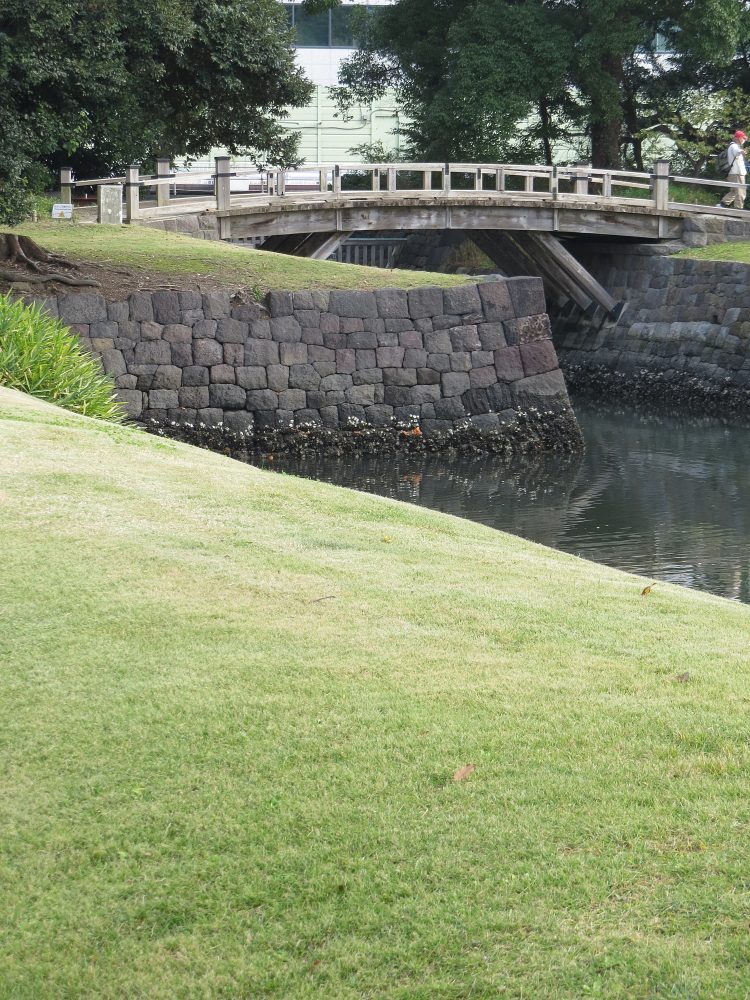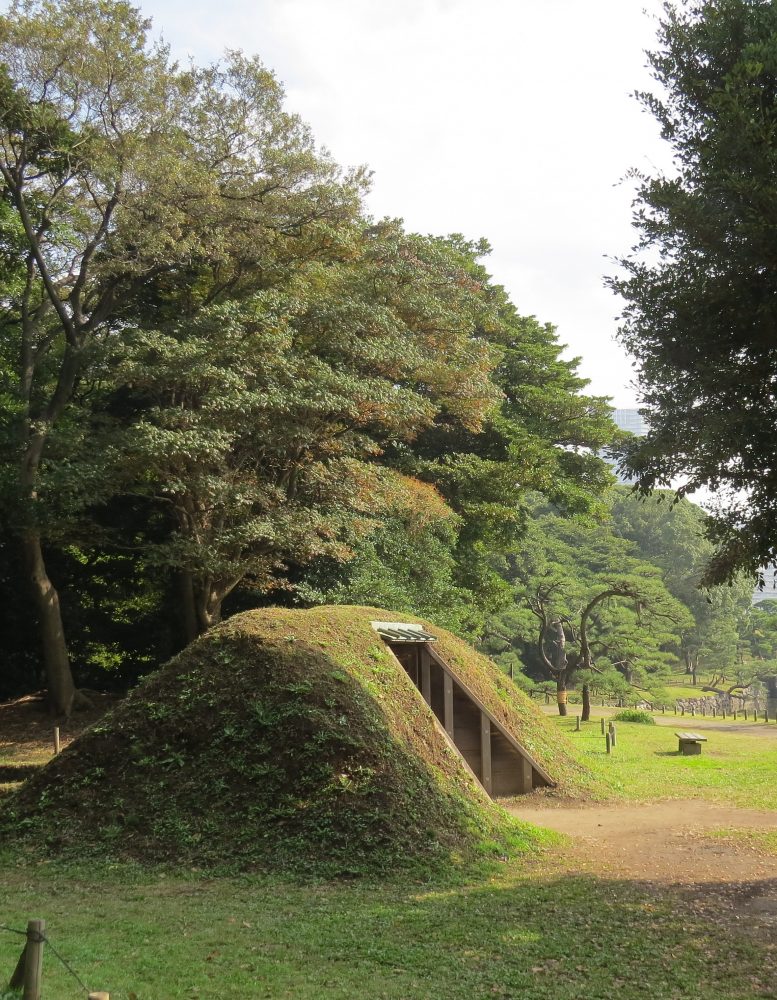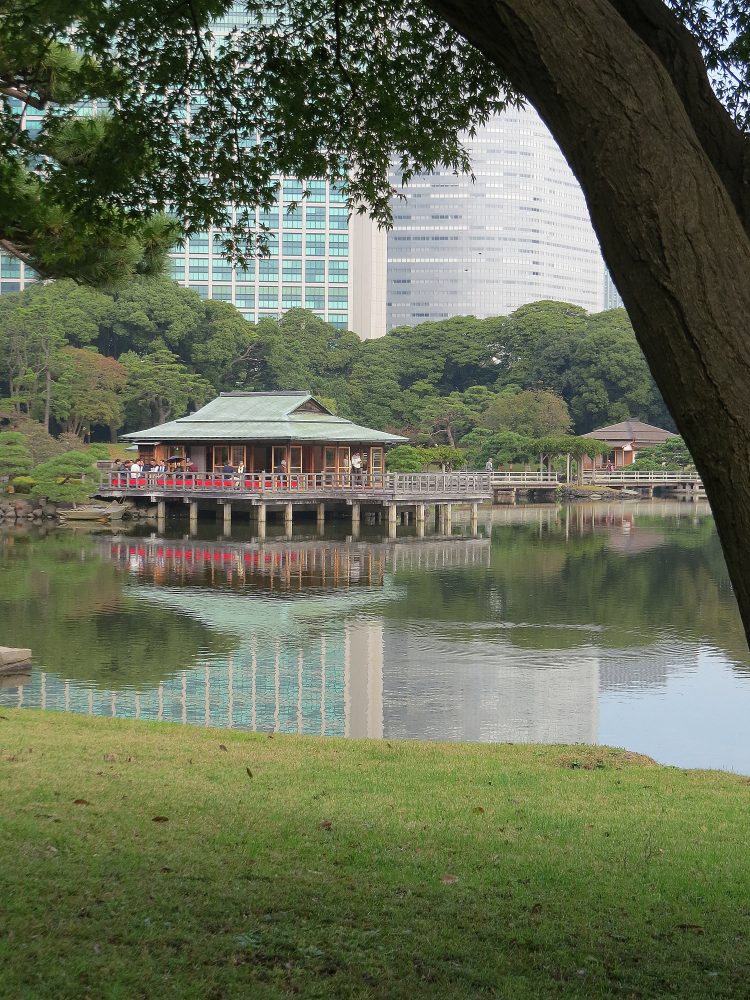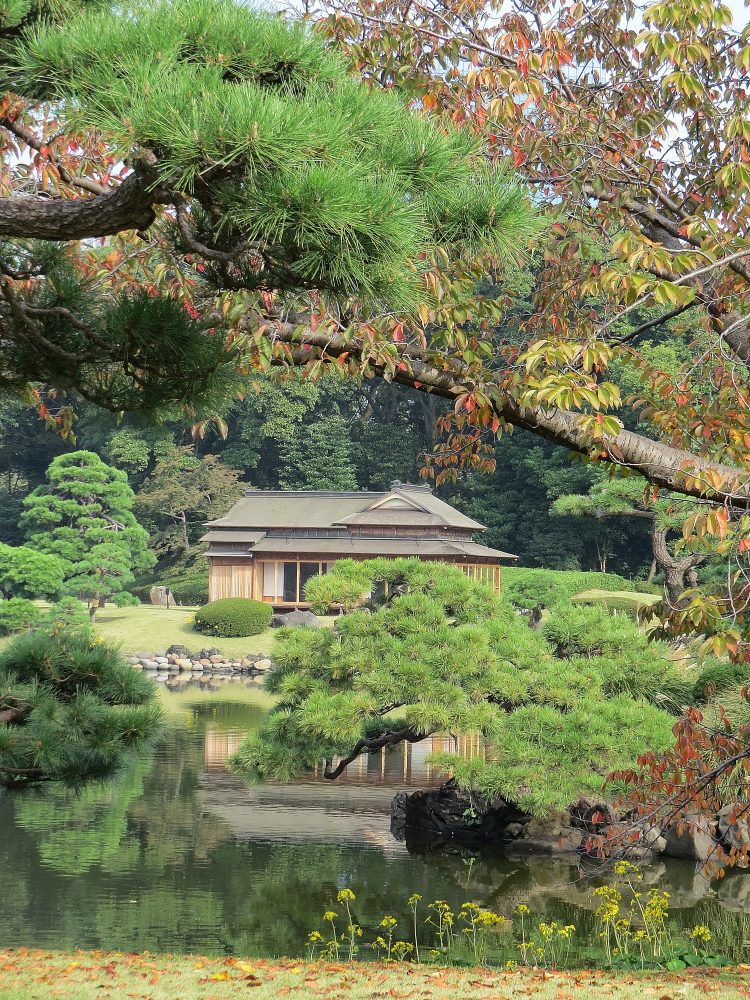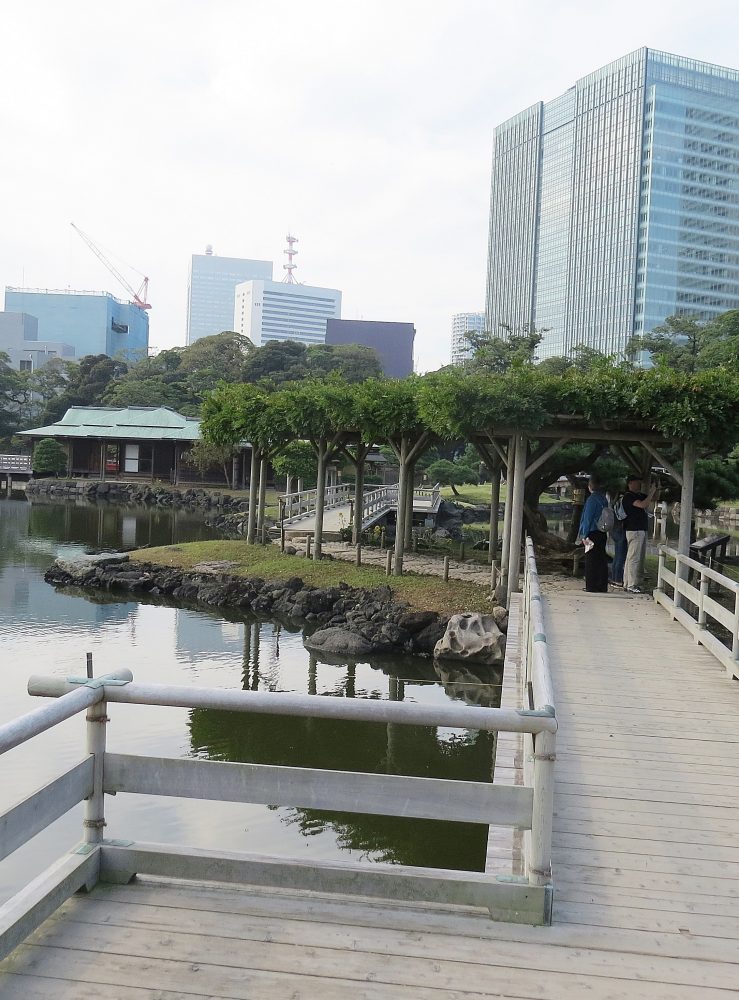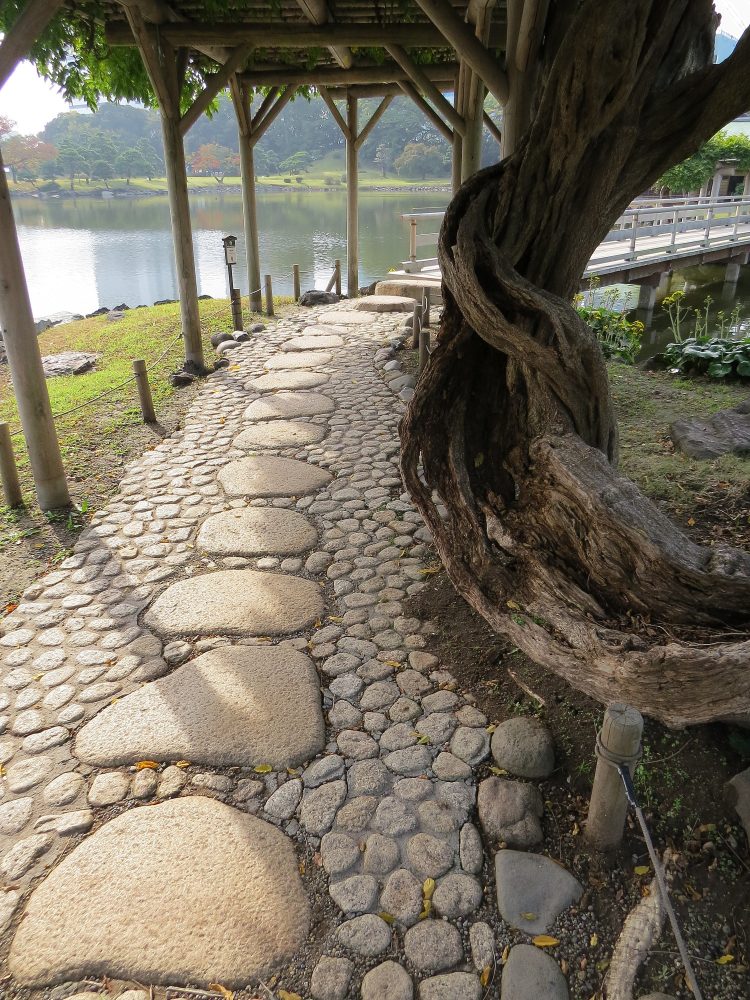I feel a bit embarrassed that on my trip to Japan I was only able to see a couple of the gardens of Tokyo, when in fact there are over thirty, many dating from the Edo period (1600-1867), some others built for early 20th century industrialists and donated to the city, and a further nine classified as Cultural Heritage Gardens. Another trip to Japan has to be on the cards…….
On researching the Hama-riku Gardens, reference is made time and time again to the garden and all its buildings being totally destroyed in World War Two. The Pacific campaign of the American military made slow progress ‘island-hopping’ up the Japanese archipelago and met with very fierce resistance, and so a series of firebombing raids were instigated against Japanese cities (other than Kyoto, spared for its cultural assets). On the night of 9/10 March 1945 Operation Meetinghouse was launched on Tokyo, and is considered the most destructive bombing raid in history (more so than Hiroshima, Nagasaki or Dresden). Sixteen square miles of Central Tokyo was annihilated, one million people made homeless and 100,000 civilians killed. The Japanese called it ‘The Night of the Black Snow’ as the ashes of hundreds of thousands of timber dwellings settled back down over the ruined city. Much light industry that supplied machine parts for the Japanese war effort was also destroyed. The Emperor toured the stricken city, and the realisation began to dawn on the Japanese military that the war was lost.
Hama-rikyu was formerly a palace and duck hunting ground of the Tokugawa shoguns (1600-1867), becoming an Imperial palace after the Meiji Restoration. Following the firebombing raids it was donated by the Imperial family to the City of Tokyo, re-opening as public gardens in April 1946. Over time the buildings have been reconstructed to the original designs, The Resthouse (Nakajima-no-ochaya) from where the shogun and court had enjoyed the sea view reopened in 1983, The Pine Teahouse (Matsu-no-ochaya) in 2010 and the Swallow Teahouse (Tsubame-no-ochaya) in 2015.
The Gardens have an Outer and an Inner Moat (Uchibori) dating from the time when the site was an outlying fort for Edo Castle. On entering the garden from the Otemon Bridge over the Outer Moat, the stunning sight of a gigantic 300 year-old black pine whose thick branches sweep low to the ground can’t be missed. Close to the pine is the Inner Moat (Uchibori) which still has landing stairs from which goods were transported from barges to the large adjacent area of food warehouses. This site is now the Peony Garden and the Flower Garden; the Peony Garden having a brief flowering period in late April, whilst the Flower Garden is first planted as a field of bright yellow rape flowering from late February to mid-April and then subsequently mass-planted with yellow cosmos for August and September.
Beyond the two gardens lies a rare survival, a duck hunting site built in the late 18th century and centred around a seawater pond (Koshindo Kamoba). Wildfowl landing on the pond were enticed by domesticated ducks up the adjacent channels which are baited with millet and barn grass, where they were ambushed by trained falcons and stalkers with nets hidden in the evergreen cover. All the ponds at Hama-rikyu are saltwater with some crabs, eels, shrimps and fish, particularly young sole, and the water level goes up and down with the tide regulated by a sluice and weir.
The southern part of the site was landscaped as an ornamental garden surrounding a large seawater pond (Shiori-no-ike) and completed in its present form around 1800. Crossing the traditional wooden bridge (O-tsutai-bashi), built in 1707 of Japanese cypress, and past the rebuilt Guest House and the two tea houses, a large area of grass with a few trees comes into view. This was the site of the Enryo-kan, the first western-style stone building in Japan which served first as a naval academy and later was turned into lodgings for foreign dignitaries, most notably Ulysses S. Grant the 18th US president. The lodging was demolished in 1890.
The survival of the rare duck-hunting grounds makes Hama-rikyu a unique Tokyo garden, but it is the precious peace and tranquillity of an authentically Japanese garden set surreally against the skyline of a frenetic 21st century Tokyo that makes Hama-rikyu special and as such a worthwhile visit.
23 December 2017 **
Where: Hama-rikyu, 1-1 Hama-rikyu Teien, Chuo-ku, Tokyo
Website: www.tokyo-park.or.jp
| Setting | 6/10 | Interest for Children | 3/10 |
| Concept | 5/10 | Accessibility | 9/10 |
| Design Execution | 6/10 | Teahouses | Not visited |
| Hard Landscaping | 6/10 | ||
| Planting | 4/10 | Dogs | No |
| Maintenance | 9/10 | ||
| Garden | 36/60 | Facilities | 12/30 |

